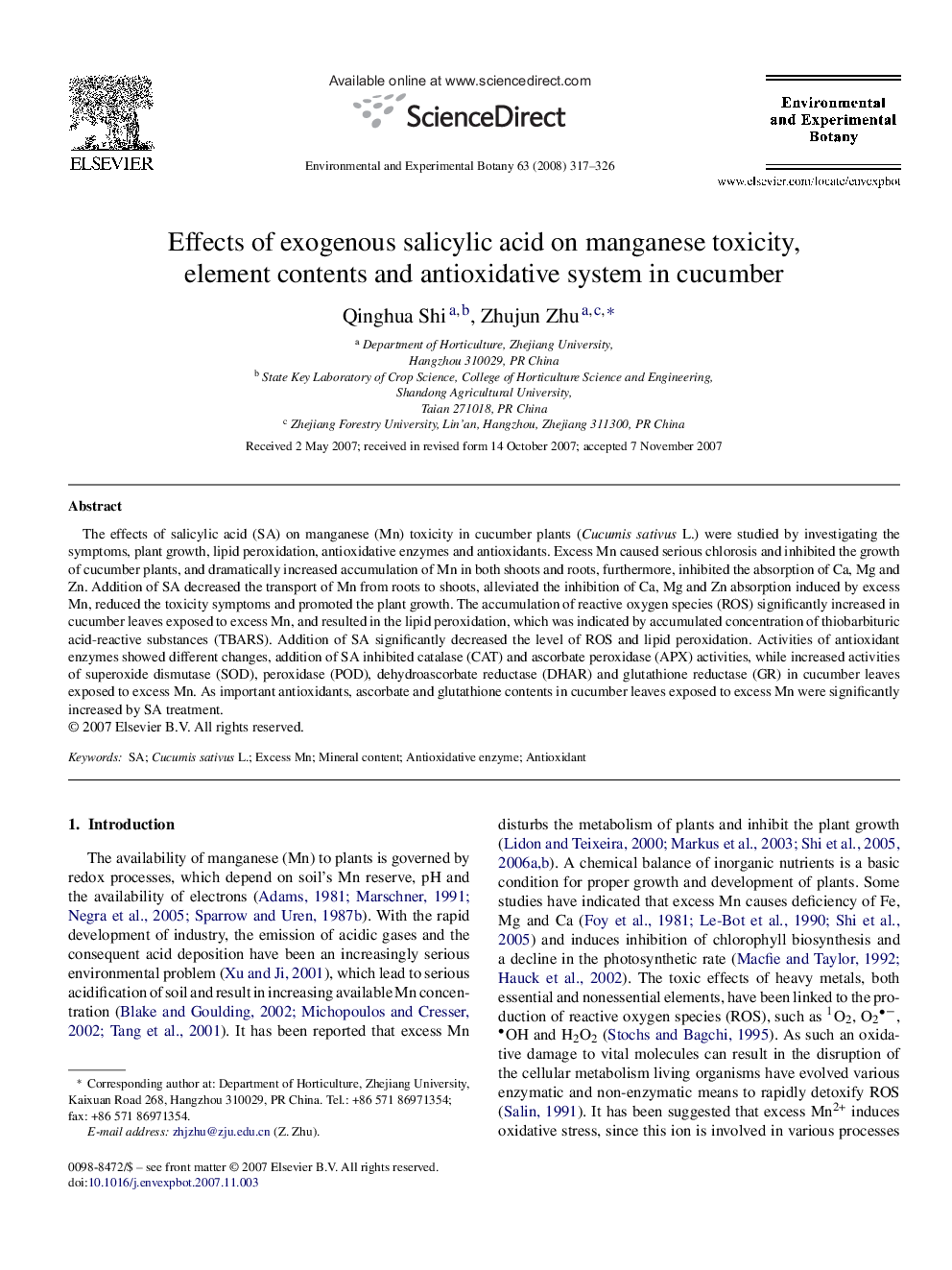| Article ID | Journal | Published Year | Pages | File Type |
|---|---|---|---|---|
| 4555305 | Environmental and Experimental Botany | 2008 | 10 Pages |
The effects of salicylic acid (SA) on manganese (Mn) toxicity in cucumber plants (Cucumis sativus L.) were studied by investigating the symptoms, plant growth, lipid peroxidation, antioxidative enzymes and antioxidants. Excess Mn caused serious chlorosis and inhibited the growth of cucumber plants, and dramatically increased accumulation of Mn in both shoots and roots, furthermore, inhibited the absorption of Ca, Mg and Zn. Addition of SA decreased the transport of Mn from roots to shoots, alleviated the inhibition of Ca, Mg and Zn absorption induced by excess Mn, reduced the toxicity symptoms and promoted the plant growth. The accumulation of reactive oxygen species (ROS) significantly increased in cucumber leaves exposed to excess Mn, and resulted in the lipid peroxidation, which was indicated by accumulated concentration of thiobarbituric acid-reactive substances (TBARS). Addition of SA significantly decreased the level of ROS and lipid peroxidation. Activities of antioxidant enzymes showed different changes, addition of SA inhibited catalase (CAT) and ascorbate peroxidase (APX) activities, while increased activities of superoxide dismutase (SOD), peroxidase (POD), dehydroascorbate reductase (DHAR) and glutathione reductase (GR) in cucumber leaves exposed to excess Mn. As important antioxidants, ascorbate and glutathione contents in cucumber leaves exposed to excess Mn were significantly increased by SA treatment.
